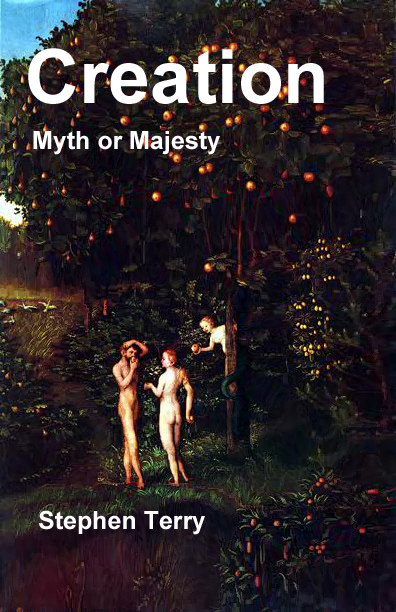
Stephen
Terry, Director

“That
They All May Be One”
Commentary
for the October 20, 2018 Sabbath School Lesson
 “ They will be my people, and I will be their God. I will
give them singleness of heart and action, so that they will always fear me and
that all will then go well for them and for their children after them. I will
make an everlasting covenant with them: I will never stop doing good to them,
and I will inspire them to fear me, so that they will never turn away from me.”
Jeremiah 32:38-40, NIV
“ They will be my people, and I will be their God. I will
give them singleness of heart and action, so that they will always fear me and
that all will then go well for them and for their children after them. I will
make an everlasting covenant with them: I will never stop doing good to them,
and I will inspire them to fear me, so that they will never turn away from me.”
Jeremiah 32:38-40, NIV
This week’s lesson comes at a significant moment in the history
of our denomination. Traditionally, as per the “Seventh-day Adventist Church
Manual,” issues of church discipline have been handled by the local church
congregation, perhaps with guidance from the local conference office. However
the international church headquarters has now sought that authority and been
granted it by vote of the Annual Council. By doing so we have moved from a Congregationalist
approach to discipline to one modeled more closely upon that developed by the Church
of Rome. Many centuries of Protestant assertions of the rights of the individual
to determine personal faith and practice in the light of Bible study and prayer
have been set aside in favor of an orthodoxy determined by a select,
centralized authority, an authority now given the power to coerce orthodoxy.
This has been done in the name of unity, but it is not unity that is actually
being promoted. Rather it is uniformity. Unity embraces and draws strength from
diversity, but uniformity sees diversity as a threat. Those within the serried
ranks who march out of step with those around them are seen as the enemy of
orthodox uniformity, perhaps even more than those on the outside of the denomination.
They may be seen as a ”fifth column” movement intended to undermine the church.
This is not far different from how the established church viewed the simple
monk, Martin Luther, at the Diet of Worms in the early 16th century.
This seems to be the will of the modern church and of our denomination in
particular, but is it the will of God?
Jesus often used the example of sheep with a shepherd to
illustrate the relationship that exists between him and his followers. In every
illustration, he was the good shepherd. No other reliable alternative shepherd is
even hinted at. His willingness to give his life for the sheep demonstrated his
ownership but his right of ownership came through creation. As creator of our
world and all life in it,[i] he is the rightful owner
of the sheep. Not once did he ever relinquish that ownership. Even when he told
Peter to care for the flock, he never referred to them as Peter’s sheep, but always
as “my sheep.”[ii]
Unfortunately, as scripture warns, not long after Jesus death, resurrection,
and ascension individuals began feeding from the flock as though it were their
own instead of feeding the sheep. The seriousness of this can be seen in the
events surrounding the experience of Ananias and Sapphira.[iii] At a time when the
church was growing rapidly in spite of opposition and persecution from the temple
priesthood, many were in need of support, but instead of feeding these lambs as
instructed, Ananias and Sapphira sold some land and gave a partial contribution
of the sale price in order to appear as though they had given all of it. They
did this perhaps in order to support themselves from the common purse as well.
This was in spite of the tidy nest egg they had secreted from the property sale.
In other words, they pretended to be feeding the flock with all they had but
instead were seeking only to feed from the flock. This was a serious offense
and could have proven deadly to the early believers had it been allowed to spread.
Instead, they regrettably paid with their lives for the ruse.
Today, we no longer have the socialism practiced by the
early church.[iv]
Instead of believers giving all into the common fund, we are fortunate if even
a majority of the members contribute a faithful tithe. And that tithe, instead
of being used to succor the destitute believers is used to compensate a
clerical class who laid claim to being shepherds, even though they do not own
the sheep. Some instead of caring for the flock, rule
over it like minor princelings in fealty to greater princes of the church who
also get their cut from the flock, even though they never set foot in the sheep
pen nor know anything of the local flock. They are entrusted with vast sums of
money that flows to them from all parts of the earth similar to the treasures
that flowed into Rome in Martin Luther’s day. With such sums at their disposal,
the temptation to use those monies to buy power and influence must be well-nigh
irresistible. This causes me to wonder how much of those funds are used to make
sure the flow of funds continues, either through stewardship campaigns or through
buying votes by contributing to special projects in far off fields. This can
bring votes to General Conference meetings that will ensure that those officers
remain in power with the continuing authority to disperse those funds according
to their wishes. Coupled with nepotism and building support by bestowing
positions on favorites who will ensure the ongoing agenda and the personalities
who support it remain in power. But how do we know that these are possible
temptations that frail humanity is capable of succumbing to within the church?
We know it because we have seen it all before, and there continue to be many
Tetzels[v] who are eager to advance their
own influence within the church by making sure the money keeps flowing and are
more than willing to use inquisitorial power to do so.
While some may see the current divisiveness within the church
to be a matter of theology and may fling Bible proof texts back and forth like
metaphorical hand grenades over such issues as women’s ordination, the real
issue that has corrupted the church down through the ages has been love of
money and the power it buys. If there were not powerful moneyed interests at
play and the church could examine issues in theological isolation from those
powerful forces, even women’s ordination might have long since been settled. But
in 1980, the General Conference took an unprecedented step to secure its power.
At an inquisition at Glacier View, they ruled the theologian Desmond Ford heretical,[vi] and though they could no
longer proceed to a burning at the stake as in Auto-da-fés of the past, they
still did all in their power and perhaps even more than was granted to them.
They defrocked Doctor Ford and pressured the local church to disfellowship him
for heresy. But what is important here is not the person of Desmond Ford or
whether or not his writings were a threat to orthodoxy. Even if we grant that
they were, which continues to be debated today, the most profound development
of that Curia was the transition from theology being studied, debated and
defined by trained theologians to a curtailing of independent theological
inquiry outside of a narrowly defined orthodoxy, an orthodoxy not defined by the
theologians but by administrators who may see things as threats to their power rather
than from a purely theological perspective.
When we look at Revelation, in chapter 13, we read of a
lamb-like beast that arose out of the earth, with two horns. Some have long equated
this beast to the United States in prophecy and have offered that the two horns
represent civil and religious liberty. The lamb speaks with the voice of a
dragon belying its lamb-like appearance. While it is true that the United States
has often projected power around the world by means of overwhelming military
might, this interpretation of the prophecy may be too facile. This is
especially possible when we note that a lamb is never used elsewhere in
scripture to denote a nation. Instead, it always represents either Christ or
his followers. Perhaps then, this prophecy may be referring to an anti-Christian
entity that has the appearance of being Christian but actually represents the
methods and the agenda of the dragon which the previous chapter in Revelation identifies
as Satan. Could it be that we are being distracted by esoteric prophetic
interpretations while the devil actually is working closer to home? As the
church accumulates more and more power is it likely to become more or less like
Christ? Will it manifest a Christ-like approach to the flock or a demonic one?
As our lesson this week states about unity, “Such unity is beyond human
accomplishment. It can be the result and gift of divine grace only.” Why then
are such great temporal efforts being made to coerce it? Is our mission to “feed
my sheep” as Jesus commanded being derailed in order to build kingdoms in this
world, a world wholly dedicated to a purpose that is anathema to Christ’s
kingdom? Perhaps it is time for someone, anyone, to start asking “Why?”
